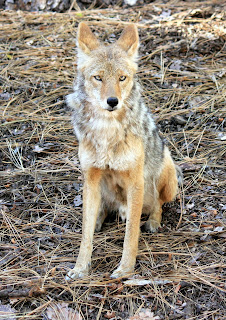 |
| Half Dome- the iconic Yosemite symbol |
In 1864, President Lincoln
declared Yosemite Valley and the Mariposa Grove of giant sequoia a public
trust. This action was taken to prevent
the commercial exploitation of the lands.
It was the first time the government had moved to protect land for the
public and formed the basis on which the National Park system was later
established. In 1890, Yosemite became
the country’s 3rd national park.
Even though the park covers 1169 square miles, with roughly 4,000,000
visitors each year, the park can become quite congested in the Valley and
Mariposa Groves.
Over the past few weeks, we
have monitored the most recent Yosemite fire closely.
Started on
 |
| El Capitan on the left, Three Brother on the right |
August 17th to date, it has burned 401 square
miles (not all within the park borders) but the fire is now 84% contained and
recent rain has helped. Webcams at
different locations in the park and online reports allowed us to make the
decision to go into the park. Entering
the park from the south, near Fish Camp, and spending most of our time in Yosemite
Valley, the fire did not affect our visit at all. Campgrounds were full and all of the venues
we visited were busy.
 |
| In the Mariposa Grove |
The Park Service has
instituted the use of a shuttle system to transport visitors to the popular
Groves once the parking area reaches full capacity. Private vehicles are still allowed through
the rest of the park, but the best way to see the park is to get out and hike
the many trails. With 800 miles of
trails, there are plenty of options.
Through the Valley, there are
a number of short, relatively level hikes. One of the most popular hikes
out of the valley is the Vernal Falls Mist Trail. Rated
 |
| Vernal Falls- 317 feet on the Merced River |
as moderate to strenuous, this round
trip hike can take 3-4 hours if you’re in good shape. Forty years ago, I hiked that trail and
enjoyed a picnic lunch at the top. This
visit, we viewed the falls from the vantage of Washburn Point.
For the more adventurous at
heart, Half Dome and El Capitan offer a greater challenge. Half Dome is the most dangerous and arduous
hike. There is a 4,800 feet elevation
gain from the Valley: and it’s 8,842 feet at the top. Lotteries are now used to select the 225 hikers
per day to receive the permits required for the hike. The hike can only take place when cables are
up, between mid-May to October, depending on the weather. For most climbers, this provides a 10-14 hour
hike (depending on the route selected and abilities).
 |
| El Capitan- a 3000-foot granite monolith |
El Capitan, on the other
hand, is the largest monolith in the world, and a popular and challenging climb
for those with the skill to tackle it.
During our stay, we watched 2 climbers scaling the sheer side,
unbelievable. This is NOT on
our bucket list.
With our generator failing to
provide our power, and ultimately, even our water, it was time to move on. Heading south.
 |
| Climber moving up El Capitan |
 |
| Blacktail deer in Yosemite Valley |
 |
| Alan at Washburn Point |
 |
| Cathedral Peak |
 |
| Nevada Falls- 594 feet |
 |
| View from Glacier Point |
 |
| View of the Valley from Glacier Point |
 |
| Alan painting at Glacier Point |
 |
| Coyote posing for picture |
 |
| Artist at work |
 |
| Giant sequoias grow to over 300 feet, live up to 3200 years, have a base up to 40 feet diameter, and bark up to 31 inches thick. They grow only on the Sierra Nevada's western slope. |
|
|
|


No comments:
Post a Comment